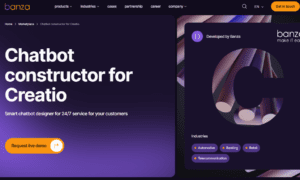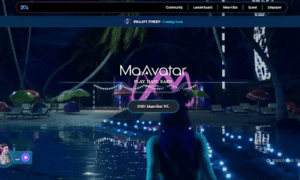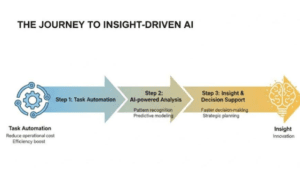Day trading is one of the most exciting ways to participate in the financial markets, but it comes with its own unique set of challenges. Unlike long-term investing, day trading requires speed, precision, and absolute reliability. In other words, it requires an advanced and reliable day trading platform.
Your platform is the lifeline that connects you to global markets, executes your trades, and provides the data you rely on to make split-second decisions. So, choosing the right platform can mean the difference between consistent growth and unnecessary losses. With so many options available, it’s important to know exactly what to look for.
What is a Day Trading Platform?
A day trading platform is a specialized software or online service that allows active traders to buy and sell financial instruments—such as stocks, ETFs, forex, commodities, or cryptocurrencies—within the same trading day.
These platforms are designed for speed, reliability, and access to real-time market data, since day traders rely on rapid price movements and split-second decisions. They typically include advanced charting tools for technical analysis, technical indicators, customizable dashboards, and features like one-click trading to help users react quickly to market changes.
Beyond execution, many day trading platforms also offer built-in risk management tools, margin trading options, and access to multiple markets, ensuring traders can diversify and manage their strategies efficiently. The best platforms are tailored for high-frequency activity, often integrating news feeds, alerts, and algorithmic trading capabilities to give traders an edge. In short, a day trading platform isn’t just a place to place trades—it’s a complete toolkit for navigating fast-moving markets.
Why Is It So Important to Choose the Right Trading Platform?
A trading platform is to a trader what a guitar is to a musician or a canvas to an artist—it’s the core tool of the craft. It’s where you’ll spend most of your time studying markets, executing trades, and refining strategies.
Choosing the right platform is vital because it significantly impacts your speed, efficiency, and profitability. Whether you’re trading stocks, forex, commodities, futures, or crypto, the right platform ensures real-time data, fast execution, and broad asset access, allowing you to act quickly in fast-moving markets.
Apart from speed and access, a strong platform provides intuitive tools for analysis, charting, and risk management, helping you make smarter trade decisions with confidence. Just as important is security and trust—because an unreliable or unregulated platform can lead to missed opportunities, hidden costs, or even data breaches. That’s why transparency, regulation, and reliable customer support are non-negotiable.
Here are the key features you get in an advanced trading platform:
- Real-time market data and fast execution speed
- Wide range of tradable assets
- Advanced charting and risk management tools
- Strong regulation and fund security
- Transparent trading fees with no hidden costs
In short, the right platform is not just a tool but the foundation for successful and sustainable trading.
How to Choose a Day Trading Platform – Key Factors to Consider
Before committing to a platform, you’ll want to evaluate a few critical factors. Each one can impact your profitability, security, and overall trading experience. Here’s what to keep in mind:
1. Fees and Spreads
If you plan to become a pattern day trader, trading costs must be considered. When you’re making dozens of trades in a single session, costs can pile up quickly. Spreads, which are the difference between the buy and sell price, can significantly affect profitability.
Some brokers charge a flat commission per trade, while others make money through wider spreads. Even a difference of half a pip per trade could erode a substantial part of your profit over weeks of active trading.
Overnight financing fees (known as swaps or rollover costs) may also apply if positions are left open. A competitive, transparent pricing structure ensures you keep more of your hard-earned gains.
So before choosing a platform, run some simple calculations: if you make 50 trades in a week, what percentage of your returns will be consumed by fees? That exercise alone can clarify whether the platform’s pricing works for you. Ultimately, you must choose the brokerage account that provides the ideal environment for your trading style and the type of strategy you plan to execute.
2. Regulation
Security should be non-negotiable. A regulated broker is bound by strict financial and operational standards designed to protect you, which is particularly crucial when you are trading on a margin account.
For instance, regulators like the Securities and Exchange Commission (SEC), Australian Securities and Investments Commission (ASIC), the UK’s Financial Conduct Authority (FCA), and the Cyprus Securities and Exchange Commission (CySEC) require brokers to hold client funds in segregated accounts. This means your money is kept separate from the broker’s operating funds, reducing the risk of misuse.
Regulatory oversight also ensures transparency in pricing, dispute resolution mechanisms, and overall accountability. Choosing an unregulated online broker may expose you to hidden risks such as unfair practices or difficulties in withdrawing your funds. In day trading, where margins are thin and capital is king, you can’t afford that kind of uncertainty.
3. Range of Assets
The best day traders are nimble and adaptable. Some days, the forex market offers the clearest trends; at other times, commodities or indices may present better opportunities.
A platform that gives you access to multiple asset classes allows you to diversify quickly when conditions change. Imagine spotting a sudden move in gold prices while monitoring currency pairs—you don’t want to be limited by a platform that only supports forex.
A broad selection of assets allows you to test different strategies across markets, helping you refine your edge and reduce reliance on any single instrument. In that sense, you must look for the best day trading platforms that support major and minor forex pairs, futures trading, global stock indices, popular commodities, stocks and ETFs, and even emerging markets like cryptocurrencies.
4. Trading Tools and Platforms
Tools and execution speed separate professional-grade platforms from the rest. In day trading, even a delay of a few seconds can result in missed opportunities or slippage. Advanced charting features, technical indicators, customizable dashboards, and real-time news feeds should be standard.
Automated trading capabilities are also increasingly popular, giving traders the ability to backtest and run strategies around the clock. For many, the availability of a web trading platform and a mobile app is also valuable.
For example, brokers like Switch Markets offer a range of tools and services that enhance their trading experience. This broker offers free VPS hosting to ensure faster connectivity and reduce latency during volatile trading hours, a no-code solution application that enables traders to automate their day trading strategies, and top-notch trading platforms, tools, and services to help their clients achieve success.
These advanced trading features aren’t just nice-to-haves; they directly impact the efficiency and consistency of your day trading. In short, a reliable set of tools can help you react faster, plan smarter, and ultimately trade with more confidence.
In a nutshell, here’s a breakdown of all the key factors you must consider before choosing a day trading platform:
| Factor | What It Means | Why It Matters |
| Fees & Commissions | Trading costs like spreads, per-trade fees, or account charges | Lower fees mean you keep more of your profits |
| Ease of Use | Platform design, navigation, and learning curve | A user-friendly interface helps you trade faster and avoid mistakes |
| Market Access | Range of assets available (stocks, forex, crypto, commodities, etc.) | More options let you diversify and try different strategies |
| Execution Speed | How quickly are trades processed | Fast execution is critical for day traders who rely on small price moves |
| Tools & Features | Charting, indicators, risk management, news feeds, automation | The right tools can give you an edge in decision-making |
| Security & Regulation | Broker licensing, encryption, and fund protection | Ensures your money and data are safe from fraud or mishandling |
| Customer Support | Availability of help via chat, phone, or email | Reliable support reduces downtime and stress if issues arise |
| Device Compatibility | Access via desktop, web, or mobile app | Let’s you monitor and trade from anywhere |
Final Words
At the end of the day, the right trading platform is the foundation of your success as a day trader. It’s not about choosing the one with the flashiest marketing or the most complicated features, but about selecting the platform that aligns with your goals and your trading style. Consider your costs carefully, prioritize regulation and safety, demand access to a wide variety of assets, and make sure the tools you use are built for speed and reliability.
Bear in mind that day trading is a game of margins. Every fraction of a second, every pip, and every cost matters. The platform you choose should not only protect your capital but also empower you to act decisively when opportunities arise. By carefully weighing all these factors and exploring different brokers by testing them on a paper trading account, you’ll be able to choose the platform that comes with robust tools and strong regulation. Ultimately, this gives you the best chance to thrive in the fast-paced world of day trading.



































